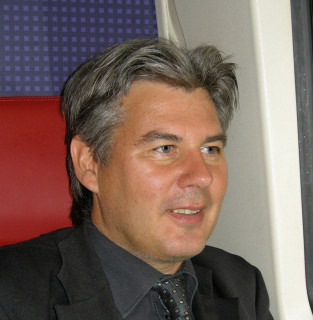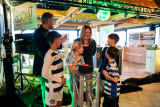Ronald Smallenburg is co-founder of Pontiflex, a start-up which designs modular bridges out of sustainable materials.
“My business partner Joris Vermeulen and I started Pontiflex a few years ago. A key motivator was the state of the Nescio Bridge for bicycles spanning the Amsterdam-Rhine Canal between the Amsterdam suburb of IJburg and the city itself. This €15 million bridge opened in 2006, but only a few years later, its steel started to rust. It served as an inspiration to start thinking about designing more sustainable bridges on a competitive budget.
Joris asked me to join him in searching for solutions. We discovered there is a huge market for bridges and other infrastructure. A major portion of the post-WW2, so-called ‘boomer infrastructure’ in the Netherlands is at the end of its lifetime—just as it is in most Western countries. It needs to be replaced, repaired or refurbished as well as expanded, especially given the growth in cycling seen everywhere in the Western world. At the same time, society requires more sustainability. We saw excellent business opportunities.”
Alternative materials
“At Pontiflex, we believe we all need to find alternatives to classic steel and concrete, the building sector’s key materials. Their production is one of the most polluting processes in terms of CO2 emissions. That’s why we started to look for sustainable alternatives to use in new construction. They include FSC-certified wood, a revolutionary bio-composite, recycled plastics and cementless concrete made from old asphalt and industrial waste. Over the years, we were granted a total of four subsidies to finance our search for the best sustainable materials to use in new bridge construction.
Our answer to modern-day challenges is to double sustainability. Our modular bridges combine easy-to-build-and-adapt bridges with circular materials. Every element of our bridges can be replaced or reused at any time, independent of each other. This means that we can quickly build a bridge, or disassemble and move it if necessary, or adapt to new conditions, including length and width.”
Conservatism
“Developing sustainable infrastructure is challenging given the conservatism in the sector. I believe that the public sector and the industry need vision and boldness. Vision for a sustainable infrastructure, boldness in daring to design and implement new constructions and materials, either as a public client or as an architect, engineer or contractor. Calculated risks are the key words here. Do your research and test thoroughly, but dare to be different and accept your losses or approve your gains.”
New generation of infrastructure
“We participate in GO!-NH, an innovation program of the province of Noord-Holland in the Netherlands. With programs such as these, we expand our network and learn from the experiences of other entrepreneurs. I’m still new to Amsterdam Smart City, but I’m open to new connections. I’m also happy to share my entrepreneurial experience in the field of sustainability.
The Amsterdam Metropolitan Area, and the Netherlands in general, offers a lot of creativity. Here, there are many people with different backgrounds and ideas. The construction industry will benefit greatly if we tap into this diversity—not only because we need more technicians, but because we also need people who think differently. Women, migrants and refugees can provide the industry with new input and new creativity, which is crucial for a new generation of infrastructure.”
If you’d like to get in touch with Ronald, you can find himon this platform.
This interview is part of the series 'Meet the Members of Amsterdam Smart City'. In the next weeks we will introduce more members of this community to you. Would you like show up in the series? Drop us a message!
Interview and article by Mirjam Streefkerk



